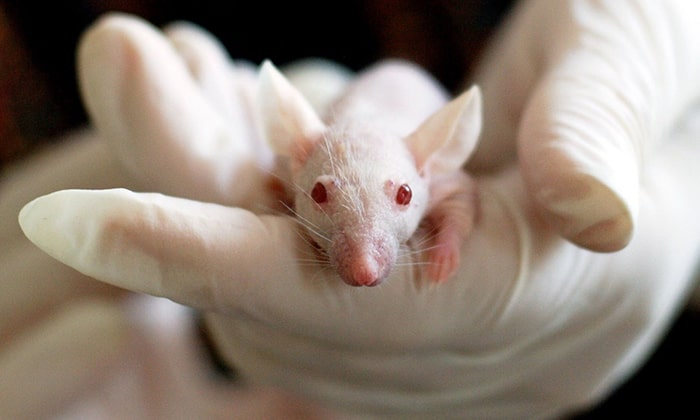What is Animal Testing?

For what seems like eons, the public has been fighting with major companies and brands to ban animal testing. Animal testing has one goal: to make sure the product the company produces is safe for humans to use. In the early 2000s, it was much more widely accepted to use small rodents and mammals for what was said to be the greater good of the people. But, times have changed. We don’t need animal testing, and people are starting to realize we should strive to stop it completely.
A Brief History on Animal Testing
Animal testing hasn’t been around as long as you might think. One major instance where the issue regarding public safety and toxic chemicals emerged is in 1921 in Journal of the American Medical Association. In this journal, researchers stated that there was a serious lack in testing, causing eye irritation from various chemicals in something called Lash-Lure (a synthetic dye used for mascara and filling in eyebrows). They reported several cases of humans going blind, developing disfigurements, and confirmed one death.
After more cases similar to Lash-Lure came into the light, the US passed the Food, Drug, and Cosmetics Act of 1938, which made it very clear that any and all consumers were protected from harmful toxins. This was confirmed at the expense of innocent animals through horrific testing. From there, the EPA formed in 1970, and more laws and regulations were added to make products safer for consumers:
- The Toxic Substances Control Act in 1976 – bans the manufacture or use of any chemical that it deems hazardous, also authorizes the EPA to require testing of potentially harmful chemical substances already on the market.
- The Occupational Safety and Health Administration (OSHA) in 1971 – emphasizes safety in the workplace. Sadly, this act made it okay to perform animal testing on toxins.
- Consumer Products Safety Commission (CPSC) in 1972 – responsible for maintaining a clearinghouse of information about the hazards associated with the use of consumer products.
Animal Testing Procedures
Rodents and mice are the most common animals used for testing. These little fuzz balls are continuously put through horrifying tests people wouldn’t dare perform on humans, simply to make sure the product is safe. When it comes to animal testing, there are eight different types of tests that can be used according to researchers from the Center For Alternatives To Animal Testing (CAAT) at Johns Hopkins University:
-
- Acute, Subchronic, and Chronic Toxicity – focuses on the effect a chemical has on a creature alive and dead during various lengths of exposure.
- Reproductive Toxicity – focuses on the effect a chemical has on fertility.
- Developmental Toxicity – focuses on how a chemical can cause abnormalities in an embryo, fetus, or newborn animal.
- Ocular- and Skin-irritant – focuses on the chemical’s ability to inflame and/or irritate the skin or eyes.
- Hypersensitivity – focuses on the chemical’s tendency to form rashes and allergic reactions.
- Phototoxicity – focuses on the chemical’s activity under sunlight and its toxic levels.
- Toxicokinetic Studies – focuses on a chemical’s metabolism, storage, absorption, distribution, and excretion.
- Behavioral Tests – focuses on how a chemical changes cognitive function during the developmental stage and adulthood stage of an animal.
Alternatives to Animal Testing
It’s scary how many different ways animals are harmed for science, but we know they don’t have to be harmed to get the result or answer needed. When it comes to testing, researchers and scientists perform a test that falls under one of The Three R’s of Alternatives:
-
- Refinement alternatives – refines a procedure to alleviate or minimize potential animal pain (not there with this one…).
- Reduction alternatives – reduces the number of animals used in a procedure (getting closer here…).
- Replacement alternatives – replaces a procedure that uses animals with a procedure that doesn’t (this is where we want to be!!).
The good news is that science is ever-changing, and we’re stepping toward the path to alternatives that don’t harm any of our favorite little animals with in vitro toxicology and biomedical research. In vitro methods involve studying a chemical or toxin outside of the body of an animal, and although is still a baby in the science world, it’s slowly becoming practiced more and saving animals around the world!
Besides not harming animals, in vitro practices come with three big benefits, including:
- The tests are cheaper and quicker than using animals.
- The conditions for experimenting are highly controlled and can easily be measured.
- The tests can predict the cellular and molecular effects of a drug or toxin.
Sadly, it’s a slow process getting to a fully animal-free testing procedure depending on the toxin or product. But the last 40 years have changed the way many of us view animal testing, and with in vitro procedures becoming more normal and perfected, we could see a big change in how we test products sooner than we think.
Some Quick Animal Testing Facts
Are you disgusted with animal testing yet? Well, we’ve got some unnerving facts that might push you over the edge found by DoSomething.org…
-
- Over 100 million animals are burned, crippled, poisoned, and abused in US labs every year.
- 92% of experimental drugs that pass as being safe and effective in animals fail in human clinical trials.
- Labs that use mice, rats, birds, reptiles and amphibians aren’t excluded from the minimal protections of animal testing under the Animal Welfare Act (AWA).
- Up to 90% of animals used in US labs aren’t counted in the official statistics of animals tested. Which means more innocent animals are being abused than we think.
- Europe, the world’s largest cosmetic market, Israel, and India have already banned animal testing and the sale or import of animal-tested cosmetics. The US is getting there, but they still struggle to implement basic animal testing rights.
- AWA doesn’t require the use of valid alternatives to animals, such as in vitro, even if they’re available.
- According to the Humane Society, registration of one pesticide requires more than 50 experiments and the use of as many as 12,000 animals.
- In tests that include potential carcinogens, animals are given a substance every day for two years to test its effectiveness.
- Fertility tests involve impregnating animals multiple times, killing the pregnant animals, and testing or killing their fetuses.
- Several cosmetic tests performed on mice, rats, rabbits, and guinea pigs include skin and eye irritation tests. These tests use chemicals and either rub on the chemical, shave the skin, or drip into the animal’s eyes without any pain relief.
Be the Change and Watch Animal Testing End
Animal testing is bad. Period. All of these years of lives lost that we should be learning from, yet we still have this ethical debate in the US over the safety of innocent creatures. We should treat animals the way we treat each other—after all, many of us have one as a pet. Can you imagine someone testing toxic products on your pet?
Be the change, and help spread the word about the cruelty of animal testing! Your voice matters, these animals can’t stand up for themselves.






